Latest News
Innovation and Collaboration Leads to Cancer Research Revolution
Posted by on July 9, 2015 at 6:46 PM EDT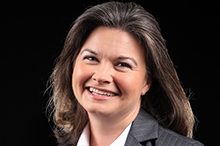
I am fascinated by precision medicine, both personally and professionally. As Americans, we want the best in healthcare, and we have many examples of great healthcare happening around us. Traditionally, though, the focus has been on the providers of care, such as doctors, nurses, and hospitals. With precision medicine, there is great potential to shift the focus of care to each individual, rather than through a lens of the “average” patient.
You always hear people talk about “aha” moments, but it’s still kind of shocking when you have one. I remember the exact moment that changed the course of my life. You might think it was getting married or the birth of my children. If you know much about my story, you might think it had something to do with my son’s cancer diagnosis, and it did – but not how you might think.
You see, my son David was diagnosed with brain cancer in 2010. It was a devastating blow to our family. David had the exact same type of cancer that Ted Kennedy died from in 2009. An aggressive cancer, there are few effective treatments and most patients only survive for less than two years. We knew that curing David was out of reach at that moment, but we were optimistic that we could keep him alive until a cure was found. It was impossible to look into his blue eyes, see his giant smile, and think that he wasn’t going to make it.
I wish this was one of those stories where a miracle cure was found at the last possible moment. I wish that I could tell you that David would be a senior in college this fall along with his friends. But that’s not how this story goes. After only 20 months, David passed away. He was as ready as an 18 year old could be and was always more concerned with those he would leave behind – especially other kids with cancer. We had started volunteering with brain cancer groups almost as soon as David was diagnosed, and in his honor, we continued volunteering.
My “aha” moment came at one of those events. A cancer researcher said in her speech that she thought a cure for cancer could be found if they could compare 50,000 genomes. That sentence stuck with my husband, Richard, and I. We couldn’t figure out why someone wasn’t comparing those genomes. As soon as she finished speaking, we asked to talk with her. She explained to us that although there are many genome databases, none of them had reached a scale large enough to do the types of comparisons she thought was necessary.
She started us down a path of research. We searched for the biggest genomic databases we could find and talked to as many researchers as we could. The recurring theme always seemed to be that none of the databases included everything that the researchers wanted. There were major technological hurdles of sharing and collaborating on large scale amounts of genomic data. Nothing we could find was built to scale to the vision of collaborative research that we had formed.
So in 2013, we started working on a new nonprofit – not because we felt the need to have a foundation of our own, but more because we couldn’t find anyone who believed that the collaborative database we envisioned was even possible. We wanted to build a new kind of real time, open-access infrastructure incorporating genomic and clinical data accessible to any bright mind who wanted to work on cancer research.
We were fortunate to connect with a group of amazing pediatric cancer researchers. They had formed a consortium of research hospitals dedicated to new ways of doing cancer research that empowers collaboration and discovery. Partnering with them, we’re creating an innovative, open access data repository that allows for new types of collaborative analyses to be performed on the internet. Our efforts have the capacity to transform not only cancer research, but also any number of other biomedical research fields.
Amanda Haddock is President of Dragon Master Foundation, a nonprofit focused on giving cancer researchers the tools and technology they need to find better treatments and cures.
Learn more about TechnologyRemember the ME in Medicine
Posted by on July 9, 2015 at 6:44 PM EDT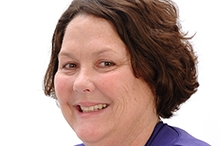
I am fascinated by precision medicine, both personally and professionally. As Americans, we want the best in healthcare, and we have many examples of great healthcare happening around us. Traditionally, though, the focus has been on the providers of care, such as doctors, nurses, and hospitals. With precision medicine, there is great potential to shift the focus of care to each individual, rather than through a lens of the “average” patient.
I’ve spent my entire career working in healthcare, both as a nurse, and then building and implementing electronic health records for doctors and hospitals. When my daughter Morgan was diagnosed with a rare disease called Juvenile Dermatomyositis at 11 years old, I learned firsthand just how fragmented and provider-centric the healthcare system actually is. She went from being a competitive gymnast with award-winning tumbling to a very sick girl who had trouble walking up the stairs or riding her bike down the street.
After over a year of unexplained symptoms, we finally found a diagnosis. It was the most terrifying day of my life when the doctor told me with tears in her eyes that my child had a life-threatening illness. The doctor gave me the “average patient” education that left us with a lot of questions and waiting three months to see a specialist. Fortunately, that very night, I discovered a non-profit organization called Cure JM where parents of children with JM gave me the names and emails of doctors who specialized in JM as well as important advice on how to survive until our first appointment which was weeks away.
This new chapter in my life ignited my passion for individualized care. Morgan went from a single pediatrician, to 12 different healthcare providers at six different health systems. She currently has 9 different patient portals, each with their own version of her medical information, their own user name, password, and URL to remember. It wasn’t long into our journey when it hit me: How can her team of providers possibly understand her healthcare story if they only have access to a tiny piece of it?
As a co-founder of CareSync, I am proud of the work we have done to make patients individuals in the health system. By removing technology hurdles, portal logins, outdated information, and providing the patient with a place where they own their health information in a way that is collaborative, we have seen individualized results happen. Patients who were very sick are now feeling much better because the information helped them get a diagnosis that they were desperately seeking or because they are no longer taking medications that shouldn’t have been prescribed together. By connecting family members, patients, providers, dieticians, physical therapists, school nurses, and other providers together with the patient at the center of their care, errors have been corrected, and unnecessary tests, procedures, and hospitalizations have been avoided. These amazing accomplishments came simply by fostering knowledge and collaboration, and by giving people the power and encouragement to access their health information, and the ability to share it with those who need it.
My challenge to our entire healthcare system, and especially the innovators looking to make it better, put the patient in the center. Break up the silos of information that prevent individualized medicine to take root and grow into something beautiful. Combine the data, all of it, including genetics, medical records information, patient-generated data, with the collaborative, innovative minds of Americans who will create amazing discoveries to improve healthcare. It’s the American way, and it is time that we, since we’re all patients, demand it in healthcare.
Amy Gleason is the Chief Operating Officer at CareSync and the Vice President of Research for the Cure JM Foundation. She lives in Tampa, FL.
Learn more about TechnologyPrecision Medicine in the Community: Understanding, Participation and Potential
Posted by on July 9, 2015 at 6:40 PM EDT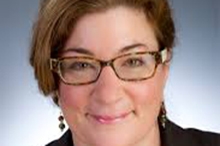
I am honored to be recognized as a community leader in precision medicine, and to help our society think about the relationship between precision medicine and health equity. There is great promise here, a healthier future for our county, our next generation, and generations to come. But there is also the potential to worsen our existing health disparities.
My research focuses on ensuring that all people are given the opportunity to be included in developing new therapies and treatments. This work started 11 years ago when I had a conversation with a patient—a conversation that still happens every day. A man with heart failure who was seeking treatment at our clinic asked if it was true that he would do better with a medication that was being promoted as more effective in Blacks. As a nurse practitioner I wanted to maintain the trust in our relationship; as a clinician and a scientist I needed to use the best evidence available. The answer was that I really didn’t know. We didn’t know about that medication, and we still don’t know about many of our medications and treatments today.
Five years ago, under a grant from the Robert Wood Johnson Nurse Faculty Scholar Program, my community partners and I started to build the capacity for our neighbors, friends and the community in Harlem to understand what we know so far about genomic medicine. We knew that speaking to communities of color about Precision Medicine would not be easy; but we also knew that it was critical. We started talking—in plain language—about what was coming down the pike: sequencing, biobanking, and the promise, possibilities and even problems of precision medicine. More importantly, we started listening – to people’s thoughts, dreams, fears, and frustrations. We tackled the difficult issues by holding discussions in community centers, churches, barbershops, and coffee shops. The community began talking about issues of privacy, ownership of DNA, confidentiality, risks of participation and risks of non-participation.
In 2012, we held a Genomic Health Fair in collaboration with our group, Communities of Harlem Health Revival. We offered walk-in hours where people could learn about what was being developed, and talk about what they were hearing and seeing in the news. We heard testimony from those who had participated, and discovered that most felt like they had made an important contribution to science, some felt used, and some wanted to participate but had never been asked. We held workshops in churches and developed a guide for faith-leaders to use when they are asked if their house of worship would like to participate in research.
Most recently, we have developed an animated graphic novel using President Obama’s State of the Union on Precision Medicine. We dramatized the stories of actual patients, created a set of characters for our novel that look like people from the community, and portrayed the questions that had been brought up in our focus groups. The graphic novel will help educate the community so that they can make informed decisions about research participation. We also explain that these are issues of ancestry, not race. But to understand these differences, we must find ways to enroll a wide range of participants from across the nation into the Precision Medicine Cohort. If we don’t, we won’t be able to filter out the noise of normal variation and identify the causes of disease.
We have the greatest of hope for precision medicine, but it will only achieve its promise if we advance science for all equally. This work continues that mission.
Dr. Elizabeth Gross Cohn is an Associate Professor of Nursing and Public Health and the Director of the Center for Health Innovation at Adelphi University.
Learn more about TechnologyPatient-Powered Innovation Drives Precise Care, Enhanced Quality of Life for Rare Disease Community
Posted by on July 9, 2015 at 6:31 PM EDT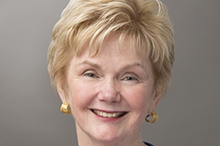
Several months after my son was born in 1977, his health began to fail dramatically. After repeated trips to his pediatrician and six weeks at Johns Hopkins Hospital, he was diagnosed with X-Linked Agammaglobulinemia, a primary immunodeficiency disease (PI), which are a group of more than 250 rare, chronic disorders, in which part of the body's immune system is missing or functions improperly.
I began researching to find information about what our family was facing. In that pre-Internet age, information was hard to come by, and the journal articles and details I could find were often outdated.
With regular immunoglobulin treatments, my son’s health improved greatly, but the lack of information became increasingly frustrating. My husband and I, along with another family and my son’s immunologist, decided to create a national patient organization for patients with PI and their families. The Immune Deficiency Foundation (IDF) was formally incorporated in 1980.
From my kitchen table, I used my work experience and master’s degree in library service to compile information for other patients and their families. We had to be innovative to create educational materials that met the needs of our growing community, and we had to collect data on the patient experience from comprehensive surveys to support our efforts and advocate on behalf of the community with policymakers.
Thirty-five years later, our organization has grown and helps thousands each year. Our national conferences, retreat weekends and patient meetings throughout the U.S. provide meaningful in-person educational opportunities for individuals and families living with PI. Our full spectrum of educational publications have been a hallmark of IDF’s efforts and have been heralded as the best patient resources about PI in the world. To provide easier access to more people, our online presence has evolved tremendously.
IDF has always focused on the patient and leveraged technology to help give researchers insight into the patient experience. Most recently, we developed an electronic personal health record (IDF ePHR) for the PI community that allows patients with these complex disorders to better manage their health. IDF ePHR, sponsored in part by CSL Behring, has become a valuable tool for our community, generating an enthusiastic user response. To provide the most advanced platform, we recently partnered with Get Real Health. After receiving a grant from PCORI, we created PI CONNECT, the IDF Patient-Powered Research Network, to bring together patient data from IDF ePHR with clinical data from the United States Immunodeficiency Network (USIDNET) patient-consented registry, which is a program of IDF and is funded in part by the National Institute of Allergy and Infectious Diseases (NIAID) and the National Institutes of Health (NIH). Patients can let their voices be heard by joining conversations in the PI CONNECT Research Forum. Bringing together this information and the patient voice holds great promise to provide researchers further insights about the diagnosis and treatment of PI, ultimately helping to improve quality of life for patients.
PI CONNECT has already attracted more than 1,000 individuals who want to make a difference and drive more precise treatment and individualized care.
Looking back, it is amazing to see how far we have come since the days at my kitchen table—the amount of research and information that is available as well as the mobility and ease of access new technology provides. The impact IDF has had is nothing short of life-changing.
Marcia Boyle is the President and Founder of the Immune Deficiency Foundation (IDF), the national patient organization for individuals with primary immunodeficiency diseases (PI).
Learn more about TechnologyTapping into the Economic Potential of Local Food Through Local Foods, Local Places
Posted by on July 1, 2015 at 11:09 AM EDTAt USDA, we understand the enormous market potential of local food. Industry estimates suggest that local food sales in America have nearly doubled in recent years, jumping from $5 billion in 2008 to $11.7 billion in 2014. We’ve invested more than $800 million in 29,100 local and regional food businesses and infrastructure projects over the past six years to help farmers, ranchers and rural businesses tap into that market.
Indeed, local food is a national phenomenon that has significant impact on every state’s economy. But local food is not only a business opportunity for agriculture, it can also be a development tool that allows communities to maximize the impact of what is grown and made locally. Local food projects can help grow local food economies and drive downtown and neighborhood revitalization, which is what the Administration’s Local Foods, Local Places initiative is all about. And this year, the initiative is particularly focused on ensuring that kids and families in need have an opportunity to benefit from the development of local food systems. This initiative is part of the White House Rural Council’s “Rural Impact” effort to improve quality of life and upward mobility for kids and families in rural and tribal communities.
Learn more about RuralFrom Abuja to New York City, an LGBT Activist Story
Posted by on June 26, 2015 at 4:07 PM EDT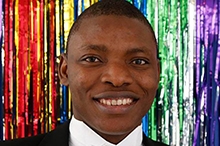
Micheal Ighodaro is being honored as a White House Champion of Change for World Refugees.
I have been thinking about all the Champions out there—President Obama, David Kato, Nelson Mandela, many like myself. I am sorry for putting myself in line with all these great champions, but if there is anything I have learned about been a champion of change, it is that when you become a champion of a particular cause you live and dream that cause and it becomes the reason why you are alive. The great Muhammad Ali said, “Champions aren´t made in gyms. Champions are made from something they have deep inside them – a desire, a dream, a vision.”
Growing up in a country like mine with a parent who was really struggling with the idea of who I was or I wasn’t, I was forced to leave my parents’ house at the age of 17.. I dropped out of school and ended up in the street like several others. I was living in a room with four other young gay men. The oldest was 18. We struggled to take care of ourselves, doing unspeakable things to survive. Activism isn’t just a title. These experiences defines why I call myself an activist because being an activist means more than fighting for Gay rights, it is about survival.
After I attended the International AIDS Conference in 2012, a media organization based in the US decided to amplify my story more than I would have liked or wanted. This made it too dangerous for me to live in Nigeria. I moved to New York not sure of where I was going to stay or how I would eat. I got to this city I now can proudly call home with just a single bag. I moved from couch to couch, staying with well-meaning friends who have now become family.
I moved to more permanent housing just after a month after I got to New York. But then this well-meaning person who offered me his home was shot and killed in the streets of Brooklyn. I was shocked beyond words. I was then introduced to Housing Works, which is a non-profit organization based in New York. Housing Works got me an emergency housing, linked me to some legal assistance so I could start my asylum application process, and got me temporary medical insurance. They did all this without pre-planning or having the funds for it.
The housing they got me soon became a room for two, because as the days went by the number of LGBT asylum seekers grew. As these new asylum seekers were introduced to the ‘’rushed and unfunded asylum program’’ at Housing Works. I starting talking to service providers in the city, filling out several forms to understand the process. Before I knew it, we had a program that was catering for 15 asylum seekers--mostly from Nigeria. I am proud to say that as of today the program has almost 40 asylum seekers who are being provided stable housing and other services. Access to health care including treatment for HIV is a key part of those services. I am proud to be working at an organization called AVAC to help end AIDS among LGBT Africans and all people.
My refugee application process took less than three months, but I have friends who have taken about two years just to get an interview with the immigration officer. Some are detained for months and sometimes years. These are part of issues we still need to address in our efforts to reform the immigration system. The efforts of Housing Works in New York and the great work that Immigration Equality continues to do needs to be supported and funded because they are on the frontline of saving our lives and providing us an opportunity for a new life in America.
Micheal Ighodaro is the Program and Policy Assistant for AVAC.
The Butterfly Effect
Posted by on June 26, 2015 at 2:38 PM EDT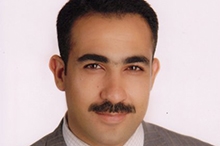
Marwan Sweedan is being honored as a White House Champion of Change for World Refugees.
Reading through the Epic of Gilgamesh one will reach the conclusion that the secret to immortality is embedded in the change that survives one’s death. The change could be a thought or an adventure that produces a good deed that benefits all of human civilization. Inspired by this realization, I was motivated to bring changes to myself and to the community I reside in. I chose to join community service groups which, indeed, is an excellent tool to serve that purpose. The groups I joined serve high-skilled immigrants. We train them, advocate for them, mentor them, and most importantly we are trying to engage them in their local communities and give them the opportunity to impact their communities positively and become shining examples of success.
My story started in August of 2008 when I reached the United States as a refugee with a degree in medicine. I arrived at a time when the recession was at its peak and I faced a significant challenges and stress when attempting to navigate the system alone with no help. I drained all my resources and capabilities trying to make sense of the new system I was now a part of. Later on and with the assistance of Upwardly Global, an organization that helps professional refugees, I managed to find a subsistence job and generate some stability through their advocacy and networking. And with the guidance of Mr. Chris King, my mentor, I started to understand the system and my new environment. I pushed my way through struggles trying to unlock my potential and gain a medical license and be able to practice in the U.S. and advance in my education. Searching for methods to achieve my goals I realized that many if not all immigrant doctors like myself face similar issues.
I reached out to Upwardly Global and Global Talent Idaho (GTI), and I suggested these organizations start a task force to resolve matters of immigrant doctors and they responded to my call. Joined by GTI, Upwardly Global, family and members of the local community, I launched the task force. We call it GT-DOC. Its mission is to help medically underserved communities by increasing their access to better health practice via well trained immigrant doctors who are willing to practice in such areas. We started to network and reach out to a variety of resources.
I tried to juxtapose the obstacles that the immigrant doctors face in the U.S. and the needs of the local community to health providers so as to generate reasonable solutions that address both issues. The biggest challenge GT-DOC is facing so far (and all the refugees as well) is the bureaucracy and the rigidity of the system that constrains refugees’ ability to be productive and innovative. Soon, I realized that these immigrant doctors’ problems were part of larger challenges. So, I started to organize the immigrant community, including by bringing together specific groups to be able to define their needs, challenges, and solutions. My next step was to reach out to community leaders to present their problems and offer potential solutions.
Promoting such cooperation and development in a community is difficult work. Sometimes we succeed and establish what we are hoping for; and most of the time we fail, but never stop trying. I learned by joining such efforts that perhaps we will not experience the change in our lifetime but the generations to come may benefit from that change. My efforts may inspire others to change and pass it to others and so on. That is the butterfly effect I am seeking, and that's how development happens. I always looked upon this nation as the symbol of change in this world. Thus, I am honored that the White House and all that it represents recognized me as a Champion of Change.
Marwan Sweedan is an advocate for GTI, a partner with Upwardly Global, and co-founder of GT-DOC a task force that help immigrant doctors to return to practice in USA.
Successful Integration for New Americans
Posted by on June 26, 2015 at 2:34 PM EDT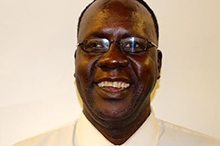
Gatluak Ter Thach is being honored as a White House Champion of Change for World Refugees.
Integration is complex. I think it is significant to recognize what it takes to create an integrated community. This task requires knowledge of processes and resources. Successful integration as part of a “New American Dream” is a role both hosts and New Americans should play. Even though resettlement agencies, both at the national and local levels, play their roles by providing refugees, pre- and post-resettlement services, successful integration is not realized in a few months or even years.
Lack of cultural knowledge as well as connections to important elements constrain integration. Knowledge of the English language is one of the most important things to gain integration. When I first arrived in this country, I didn’t know English. It was difficult for me to navigate the complex American systems. I pledged that I would do everything I could to change it. I decided to learn English well enough to enroll in a learning center in Nashville before I transferred to a two year college and then Tennessee State University where I graduated with a bachelor’s degree in computer science with minor in mathematics.
After I realized I needed to heed my family’s hopes that I settle down and get married, I thought of a little girl I met in Itang Refugee Camp in Ethiopia before I left. This girl was about eleven years old, but I promised to marry her when we both grew up. I provided her a small photo of me and told her not to marry anyone else unless she heard I died. I called and asked my brother in Ethiopia to find out more about where she was. I asked him to look for the girl who used to come through our compound to fetch water. I reminded him that after she approached us with her sisters and friends, we asked her to give us her water, and she would give us her water and return to a river to fetch more. Because of her generosity, I started to call her “my future wife,” and all of our family members and friends called her “Gatluak’s wife.”
My brother got back to me with great news about the girl. After I spoke with her and her family, I decided to go to the camp in Ethiopia to marry her. In the spring of 2004, we were married in a traditional wedding in the refugee camp. I returned to the United States and petitioned for her to join me. After she landed in Nashville, I realized Sudanese women faced unusual challenges to integration. I knew my wife needed to learn English since I could envision how difficult our lives would be, especially if Kuoth Nhial (God of Heaven) blessed us with a child.
I thought of what to do to help her. I bought a whiteboard and put it in the front seating area in our apartment to teach her the ABCs. Before I knew it, ladies from the Sudanese community joined her. Some of women walked miles for the English lessons. My apartment wasn’t big enough for these women and their children. I started to ask some Sudanese friends, “Guys, we need to rent a place where women can learn English because they really need our help,” and that was the beginning of the Nashville International Center for Empowerment (NICE), formerly Sudanese Community and Women’s Service Center, which serves refugees and immigrants from 72 different countries through a variety of programs. My work is to ensure refugees and immigrants are successful integrated into their new community through economic, social and civic empowerments.
Dr. Gatluak Ter Thach is the President and CEO of the Nashville International Center for Empowerment.
- &lsaquo previous
- 1
- 2
- 3
- 4
- 5
- 6
- 7
- 8
- 9
- …
- next &rsaquo

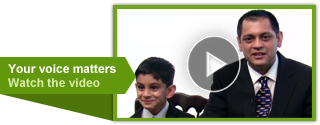
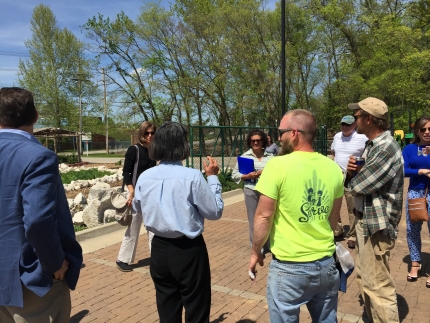
Twitter